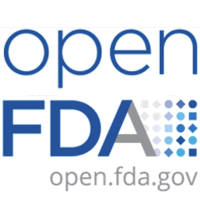FDA Issues RFQ for Large Scale EHR Study - Wants to Leverage VA's Open Source VistA EHR and Database for Research
 Roger A. MaduroThe Food and Drug Administration (FDA) yesterday issued a Request for Quotation (RFQ) for a large-scale electronic health record (EHR) system. This RFQ is very important as the objective is to develop a platform to support a critical project by the FDA's Division of Bioinformatics and Biostatistics (DBB) "to conduct research to assess the safety and surveillance of FDA regulated products through the FDA adverse event reporting systems..." The project requires "use of the large electronic medical record (EMR) system..." Adverse drug reactions are one of the leading causes of death in the US, thus finding which drugs cause negative interactions is of vital importance. The project is going to leverage the largest, most comprehensive, and clinically relevant medical records database, that of the US Department of Veterans Affairs (VA).
Roger A. MaduroThe Food and Drug Administration (FDA) yesterday issued a Request for Quotation (RFQ) for a large-scale electronic health record (EHR) system. This RFQ is very important as the objective is to develop a platform to support a critical project by the FDA's Division of Bioinformatics and Biostatistics (DBB) "to conduct research to assess the safety and surveillance of FDA regulated products through the FDA adverse event reporting systems..." The project requires "use of the large electronic medical record (EMR) system..." Adverse drug reactions are one of the leading causes of death in the US, thus finding which drugs cause negative interactions is of vital importance. The project is going to leverage the largest, most comprehensive, and clinically relevant medical records database, that of the US Department of Veterans Affairs (VA).
In other words, the FDA is going to be leveraging the extensive database created over decades by the VA through their treatment of Veterans to study adverse drug reactions. The VA not only has the most extensive medical treatment's database, it is unique in that it is clinically relevant, and has already identified the best medications available for their patients. The VA medical record database is based on the open source VistA electronic health record (EHR) system, the best and most usable hospital-based EHR in the world. The key is that VistA was developed from the ground up as an EHR to help VA medical personnel care for Veterans. The data in VistA is directly related to the patient's medical condition and treatment, and not skewed by billing codes.
VistA is one of the core reasons the VA has been recognized by more than a dozen studies carried out in the past twenty years as one of the best, if not the best medical system in the U.S. Any comparison with the private sector healthcare system shows that the VA Health System Generally Delivers Higher-Quality Care Than Other Health Providers as the most recent study, by the Rand Corporation, concludes. VA medical personnel use VistA to constantly to determine what are the most effective medical treatments.
 As a result, for example, the drug formulary at VA hospitals is less than a third of the typical formulary at private sector hospitals. The reason is that VistA has allowed VA clinicians to determine which are the best medications and which ones are not as effective, and in fact dangerous and contra-indicated. In that role, the VA medical system is in effect the sentinel system that first detects which new medications are effective, and which are dangerous. For example, it was the VA that sounded the alarms about the dangers of Vioxx.
As a result, for example, the drug formulary at VA hospitals is less than a third of the typical formulary at private sector hospitals. The reason is that VistA has allowed VA clinicians to determine which are the best medications and which ones are not as effective, and in fact dangerous and contra-indicated. In that role, the VA medical system is in effect the sentinel system that first detects which new medications are effective, and which are dangerous. For example, it was the VA that sounded the alarms about the dangers of Vioxx.
In addition, the VA negotiates drug prices, which means that the effective medications they use cost only a small fraction of what Medicaid/Medicare and private sector hospitals pay for pharmaceuticals.
That the FDA is singling out the VA and VistA as the kind of large-scale EHR for the project because of the quality and relevance of the data. FDA's approach is part of the extraordinary shift in software strategy that has taken place at FDA over the past several years. Over the past few years, the FDA has become the pioneer among Federal government agencies in leveraging open source solutions and partnering and collaborating with hi-tech companies in the private sector in the development of open source biomedical software. The FDA has made the shift to open and collaborative solutions under the openFDA strategy. The background to this strategy was laid out in detail by Peter Groen in this article.
 Taha Kass-Hout during his time at the FDA. (Image - FDA)One of the great openFDA success stories is the agency's collaboration with DNANexus, which led to the development of "The most advanced bioinformatics platform in the world." As described in this article, the "collision" between "Federal culture" and Silicon Valley reshaped the agency. The article quotes DNAnexus Chief Cloud Officer Omar Serang "Our jaws dropped to see a federal agency using GitHub, holding code hackathons. It was a crazy collision of Silicon Valley culture and federal government culture."
Taha Kass-Hout during his time at the FDA. (Image - FDA)One of the great openFDA success stories is the agency's collaboration with DNANexus, which led to the development of "The most advanced bioinformatics platform in the world." As described in this article, the "collision" between "Federal culture" and Silicon Valley reshaped the agency. The article quotes DNAnexus Chief Cloud Officer Omar Serang "Our jaws dropped to see a federal agency using GitHub, holding code hackathons. It was a crazy collision of Silicon Valley culture and federal government culture."
According to the FierceBiotech article "That same ethos, which began percolating through the government when open-source advocate Beth Noveck took up a position at the White House in 2009, is central to precisionFDA. People in positions to influence decisionmaking at the FDA have become increasingly convinced of the value of an open ethos, leading to a tweaking of the regulator approaches projects such as precisionFDA..." The "new approach" taken by FDA for precision medicine is detailed in this article.
One of the key champions of the open source transformation at FDA under the leadership of Taha Kass-Hout, M.D., FDA's first Chief Health Information Officer who came to the agency in 2013. Kass-Hout was hired by Amazon in February. Kass-Hout authored many articles during his tenure at FDA explaining the FDA's open source and precision medicine, including this one and this one. More articles on openFDA in Open Health News can be found here. This RFQ signals that the openFDA strategy continues on course. This is the kind of approach that should be embraced by other Federal government agencies.
Below we quote the relevant sections of the FDA RFQ.
Large Electronic Medical Record (EMR) system - Solicitation Number: FDA-1194299
Statement of Work
The FDA/NCTR/Division of Bioinformatics and Biostatistics (DBB) is conducting research that supports NCTR Research Support Program Acquisition Strategy. The Division of Bioinformatics and Biostatistics (DBB) requires use of the large electronic medical record (EMR) system to conduct research to assess the safety and surveillance of FDA regulated products through the FDA adverse event reporting systems, with the pilot study working on the FDA Adverse Events Reporting System (FAERS) (CDER) database.
A novel data mining and data visualization method will be developed and evaluated by using a large electronic medical record (EMR) system, such as VA databases, for drug-induced cardiovascular abnormalities (i.e high blood pressure, stroke, QT prolongation, and arrhythmia) after drug exposure. The specific aims of this study (project E0762001) are as follows:
- A Bayesian approach known as topic modeling will be employed to identify the hidden adverse events for products and characterize the significant safety signals in the FAERS, Vigibase and the VA EHR databases.
- Broaden and enrich medical lexicons in MedDRA ontology.
- Apply Latent Dirichlet Allocation (LDA) algorithm on CDER FAERS database to identify the relationships between multi-drugs and multi-adverse events, therefore, providing the availability for data mining to study relationships between drugs and adverse events. Due to patient privacy acts and strict restriction on permission to access the VA database and the specific skills needed to retrieve and process data from the VA record system, the required data can only be acquired by personnel having the authority to access the database.
The VA Cardio-related database (using drug-induced cardiovascular disease as a starting point) will be developed and used for this contract. The database will be developed using the VA Informatics and Computing Infrastructure (VINCI) database of the VA health system, including drugs, adverse events, lab data, ECG, dose and drug co-exposure information, etc.
The database requires drug dictionary, laboratory dictionary, ICD-9 dictionary, patients receiving any of the study drugs, patients with cardio events, exclude other cases of acute cardiovascular disease, medication-matched control population database, study population table and cardio event tables, patient demographic table, comedications taken at time-of cardio events, database of comorbidities at cardio events and model implementation.
Technical Requirements:
The database shall be developed to include the following:
- Identify patients who developed cardiovascular abnormalities (such as high blood pressure, stroke, QT prolongation, arrhythmia, etc.) after drug exposure. Drugs that induce severe cardiovascular abnormal events will be identified in the system as "study drugs".
- Create a drug dictionary populating all study drugs available at VA sites. The drug dictionary shall use a unique drug identifier (drug ID) to organize all study drugs that have been prescribed at the VA between 2000 and 2015.
- Select a medication-matched control population. Medication-matched control subjects will be identified as subjects who received the same agent for a similar duration but did not develop acute cardiovascular abnormalities.
- Create a Study population table and a cardio-event table. Combine the above cases and controls to create a study population table.
- Create a Demographic table. Retrieve demographic information for the study population and create a demographic table. Age, gender and ethnicity information will be collected.
- Create a Table depicting comedications taken at the time of cardio-abnormalities.
- Create a Table identifying comorbidities at cardiovascular abnormalities. The study population needs to be linked to vital information, laboratory data and an International Classification (ICD-9) code table.
- Provide aggregated data in the form of PDF, MS Word, MS Excel files, or text files as applicable
- Tags:
- adverse drug reactions
- adverse event reporting
- Amazon
- Bayesian approach
- Beth Noveck
- Bioinformatics and Biostatistics (DBB)
- bioinformatics platform
- CDER database
- collaborative solutions
- data mining
- data visualization
- DNAnexus
- drug dictionary
- drug formulary
- drug-induced cardiovascular disease
- Electronic Health Record (EHR)
- Electronic Medical Record (EMR)
- FDA Adverse Events Reporting System (FAERS)
- FDA regulated products
- Food and Drug Administration (FDA)
- ICD-9 dictionary
- laboratory dictionary
- Latent Dirichlet Allocation (LDA) algorithm
- MedDRA ontology
- medical lexicons
- medical records database
- multi-adverse events
- multi-drugs
- NCTR Research Support Program Acquisition Strategy
- Omar Serang
- open source solutions
- open source VistA
- openFDA strategy
- Peter Groen
- precisionFDA
- RAND Corporation
- Request for Quotation (RFQ)
- Roger A. Maduro
- Taha Kass-Hout
- topic modeling
- US Department of Veterans Affairs (VA)
- VA Cardio-related database
- VA EHR databases
- VA health system
- VA Informatics and Computing Infrastructure (VINCI)
- veterans
- Vigibase
- Vioxx
- VistA
- VistA EHR
- The Future Is Open
- Login to post comments